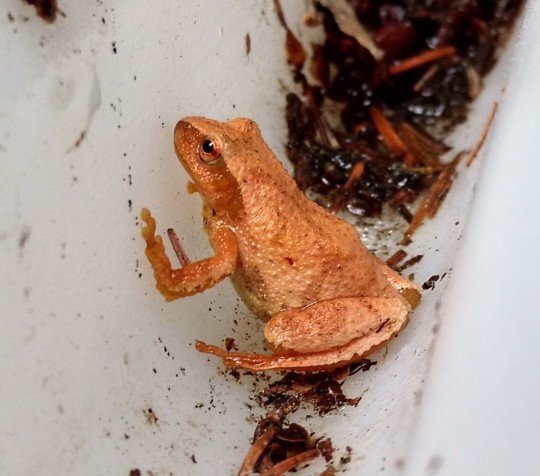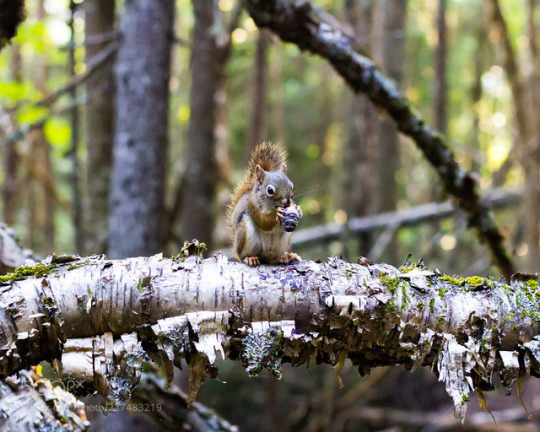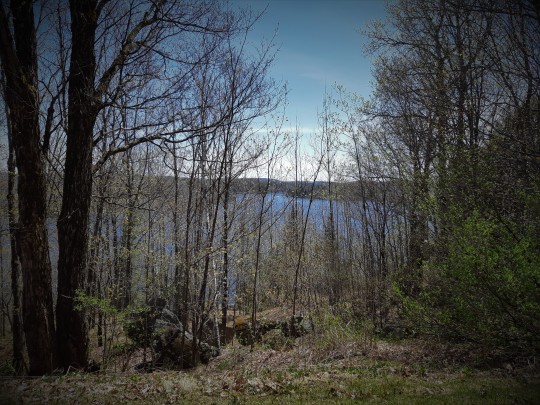#Laurentides Wildlife Reserve
Text

Grey Jay aka Canada Jay (Perisoreus canadensis), family Corvidae, Laurentides Wildlife Reserve, Quebec, Canada
photograph by Cephas
625 notes
·
View notes
Photo

#NorthernRaven
Smile, you're on camera!
#Northern Raven#northern territory#Ravens Valley#bird feeder#Ornithology#Study of birds#ghost recon wildlands#Laurentides Wildlife Reserve#mountainous parts of the Northern Hemisphere#Canada#The RavenKeeper
268 notes
·
View notes
Photo


Some type of frog... (if anyone would like to help identify the species name I would appreciate it)
Laurentides Wildlife Reserve (Canada), July 25 2016
2 notes
·
View notes
Photo

Givré, Frosted by francepar95 Ce matin on découvre un tout autre décor à notre passage dans les montagnes de la Réserve Faunique des Laurentides. Tout est recouvert d'un blanc de neige immaculé. Wow! Québec, Québec, Canada. This morning, we discover a whole new setting as we pass through the mountains of the Laurentides Wildlife Reserve. Everything is covered with an immaculate white snow. Wow! Quebec, Quebec, Canada. https://flic.kr/p/2ks68D7
0 notes
Photo

© own
Réserve faunique des Laurentides ( Laurentides Wildlife Reserve), Québec
#my photography#own#nature#trees#snow#winter#québec#réserve faunique des laurentides#réserve faunique#travel#forest
14 notes
·
View notes
Photo

#fallpleasedontgo insta : sebas.sauvage Trop Peur dans 2 mois c'est Noël !! Glue gun en main jraccroche les feuilles dans les Laurentides 😭.. @hoscos (à Laurentides Wildlife Reserve)
2 notes
·
View notes
Photo

Squirrel // Wildlife Reserve Laurentides by nicolasmaestripieri
4 notes
·
View notes
Photo

Grey Jay (Perisoreus canadensis), Camp Mercier in Laurentides Wildlife Reserve, Quebec, Canada
photograph by Cephas | Wikimedia
37 notes
·
View notes
Text
‘HE WAS LIKE A LITTLE SNOWMAN’: Quebec hitchhiker left with hypothermia and possible fine
‘HE WAS LIKE A LITTLE SNOWMAN’: Quebec hitchhiker left with hypothermia and possible fine ‘HE WAS LIKE A LITTLE SNOWMAN’: Quebec hitchhiker left with hypothermia and possible fine https://ift.tt/eA8V8J
MONTREAL — Emile Claveau couldn’t believe his eyes as he drove to work along a busy highway in Quebec’s Saguenay-Lac-Saint-Jean region Wednesday morning.
As he approached a transport truck about 250 kilometres north of Quebec City, he noticed a man perched on the back.
“He was sitting, cross-legged, holding on to a door handle,” Claveau said Friday. “I was shocked and I tried to get the truck driver’s attention, but there was just too much traffic on the highway, so eventually I called police.”
Quebec provincial police got a call at 7:20 a.m. Wednesday reporting someone on the back of a tractor trailer, Sgt. Marie-Josee Ouellet said.
When a patrol car caught up to the truck more than an hour later, the man had climbed down and was in the stopped car of another motorist.
Truck driver Dave Tremblay, who unwittingly provided the man a lift, told radio station 98.5 this week the man was riding on about two feet of truck bed.
He figures the unconventional hitchhiker hopped on at a rest stop and was on the Quebec City-bound truck for well over 100 kilometres before a motorist managed to alert Tremblay on Highway 175 in the Laurentides Wildlife Reserve.
It’s unclear where the man wanted to go, but he was clearly determined. Tremblay said there was a snowstorm and the rider was poorly dressed for the elements.
“He was freezing. He was like a little snowman,” Tremblay told the station. He wonders how long the man would have been able to hang on if he hadn’t stopped when he did.
Police say a 38-year-old man from Alma, Que. was treated for hypothermia and could face a $1,000 fine and be hit with a dozen demerit points for holding on to a moving vehicle.
Claveau has never seen anything like it in Quebec.
“I thought it didn’t make any sense,” he said. “That’s why I tried to stop the truck. It’s not something you see every day.”
//<![CDATA[ ( function() { pnLoadVideo( "videos", "TjyA1qdM1bI", "pn_video_892373", "", "", {"controls":1,"autoplay":0,"is_mobile":""} ); } )(); //]]>
Click for update news Bangla news
https://ift.tt/2Q4xZKp
world news
#metronews24 bangla#Latest Online Breaking Bangla News#Breaking Bangla News#prothom alo#bangla news#b
0 notes
Photo

Wildlife 🌎❄️ #Canada #quebec #winter #igerscanada #travel #wildlife #ontheroad (à Laurentides Wildlife Reserve)
0 notes
Photo

#fallpleasedontgo Trop Peur dans 2 mois c'est Noël !! Glue gun en main jraccroche les feuilles dans les Laurentides 😭.. @hoscos (à Laurentides Wildlife Reserve)
0 notes
Photo

Laurentides Wildlife Reserve by nicolasmaestripieri
0 notes
Photo

#NatureWakingUp
Nature is waking up at Lac Masson from the Laurentian Mountains, Québec, Canada.
#Laurentides Wildlife Reserve#The Laurentides#mountains range#southern Quebec#mountains#lake#excursion#hiking trail#adventure#life style#photography#altitude life#wilderness#wildlandscapes#undisturbed#National Park#Canada#The RavenKeeper
76 notes
·
View notes
Photo

Squirrel // Wildlife Reserve Laurentides by nicolasmaestripieri
0 notes
Photo

Raccoon -Raton laveur by www.andrebherer.com Laurentides, QC, Canada Piège photographique (English follow) En photographie animalière le piège photographique, consiste généralement à prendre des photos d’animaux avec un détecteur infrarouge passif ou un capteur infrarouges actif. Pour ce type de photo le photographe n’a pas besoin d’être physiquement sur le terrain, le détecteur enverra un signal à la caméra qui déclenchera l’obturateur pour le photographe. Sans trop entrer dans les détails, l’infrarouge passif est un détecteur qui mesure la lumière irradiant (chaleur) des objets dans son champ de vision. Ils sont le plus souvent utilisés dans les détecteurs de mouvement à base de PIR comme les très communes caméras de chasse. Son avantage est aussi son inconvénient, il permet d’avoir la possibilité d’avoir un champ de vision plus large que l'infrarouge actif et d'obtenir des photos d'animaux même si ceux-ci ne passent pas à un endroit bien précis. Par-contre le risque de faux déclenchements dû au vent, à des changements de températures ou à d'autres animaux moins désirable est plus grand. Quant au capteur infrarouge actif, il utilise un émetteur qui envoi de la radiation infrarouge vers un receveur un peu comme un faisceau invisible. Lorsqu'un objet opaque interrompt le flux entre l’émetteur et le receveur l’obturateur de la caméra sera activé. Pour ce système aussi, son avantage est aussi son inconvénient. Il a l'avantage de déterminer l’endroit précis où l’animal passera pour une composition beaucoup plus calculé. En contre- partie, certaines opportunités peuvent êtres ratées de près à cause de cette spécificité. Le piège photographique est utilisé pour prendre des clichés ou vidéos qui seraient dans la majorité des cas impossible de faire en étant physiquement près de la caméra. Il permet de prendre des photos d’animaux sous différents angles en incluant un peu plus leurs habitats (objectif grand angle), d’animaux timides et/ou nocturnes, de limité le temps d’attente sur le terrain que l’obtention d’une photo d’un certain animal pourrait nécessiter (semaine, mois) et d’accroître grandement les possibilités créatives du photographe. Camera trap In wildlife photography, camera trapping usually consists of taking pictures of animals with a passive infrared detector or an active infrared sensor. For this type of photography the photographer does not need to be physically in the field, the detector will send a signal to the camera that will trigger the shutter for the photographer. Without going into too much detail, passive infrared is a detector that measures the light radiating (heat) objects in its field of vision. They are most often used in PIR-based motion detectors as the very common hunting cameras. Its advantage is also its disadvantage, it gives the opportunity to have a wider field of view than the active infrared and to get pictures of animals even if they do not pass to a specific place. However, the risk of false triggers due to wind, temperature changes or other less desirable animals is greater. As for the active infrared sensor, it uses a transmitter that sends infrared radiation to a receiver much like an invisible beam. When an opaque object interrupts the flow between the transmitter and the receiver the shutter of the camera will be activated. For this system too, its advantage is also its disadvantage. It has the advantage of determining the precise location where the animal will pass for a much more calculated composition. On the other hand, some opportunities may be missed because of this specificity. The camera trap is used to take photos or videos that would be in the majority of cases impossible to do by being physically near the camera. It allows taking pictures of animals from different angles by including a little more their habitats (wide angle lens), by taking pictures of shy and / or nocturnal animals, it limits waiting time on the field that obtaining a photo of a certain animal could require (week, month) and greatly increase the creative possibilities of the photographer. All rights reserved ©André Bhérer https://flic.kr/p/2fmKGcd
0 notes
Text
Popular on 500px : Squirrel // Wildlife Reserve Laurentides by nicolasmaestripieri https://t.co/t1pszyDr6w
Popular on 500px : Squirrel // Wildlife Reserve Laurentides by nicolasmaestripieri http://pic.twitter.com/t1pszyDr6w
— hani ghabbar (@almabani_2011) September 9, 2017
via Twitter https://twitter.com/almabani_2011
September 09, 2017 at 07:39PM
0 notes